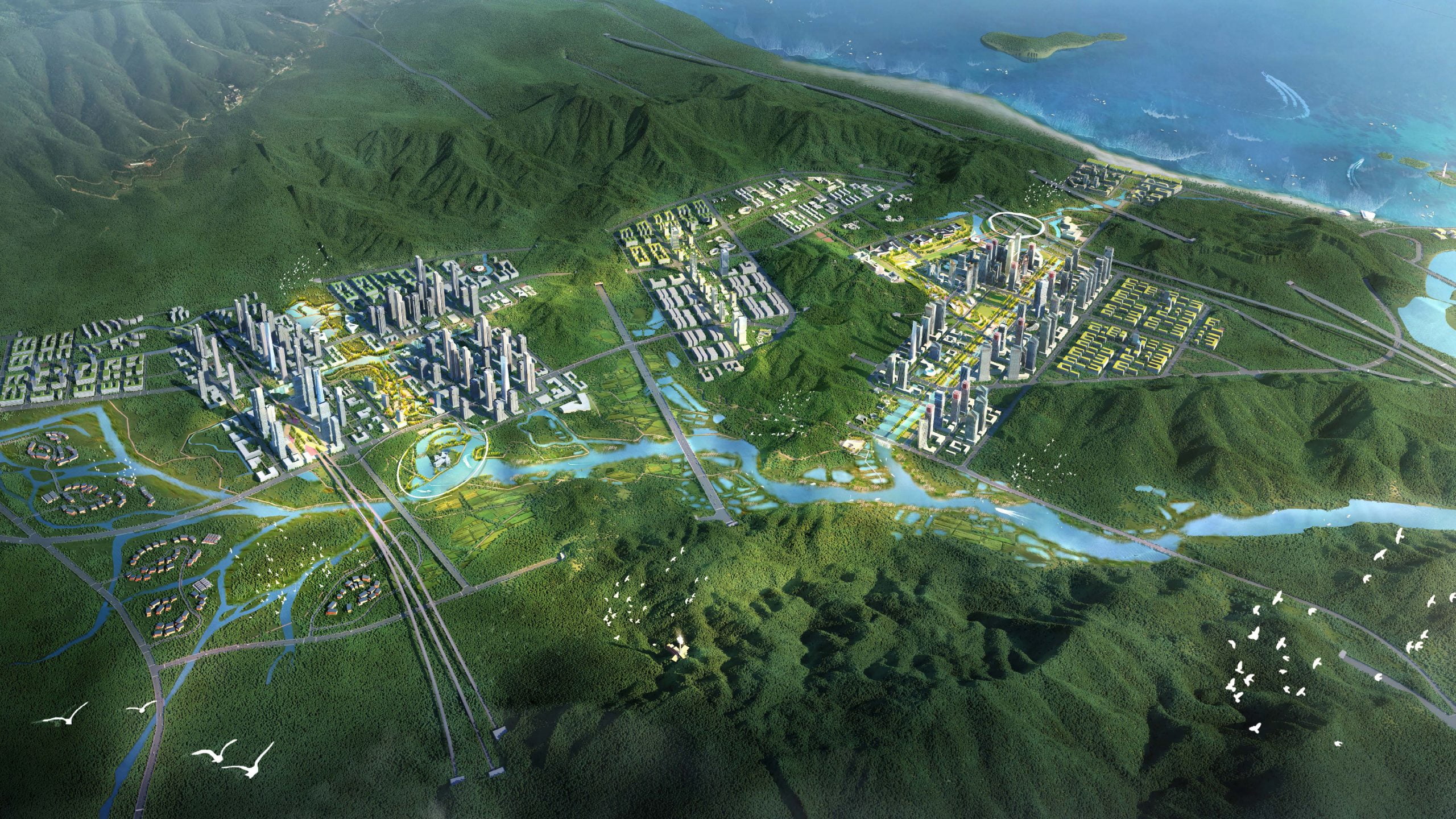Shenshan is a new city in southern China designed by McGregor Coxall and South China University of Technology (SCUT) using the Biourbanism model.
Shenshan will be a new specialised smart technology city, set to become a global leader in artificial intelligence by 2030. Housing 1.5 million people on a 145-square-kilometre coastal site to the east of Shenzhen, it lies at the heart of the new Shenzhen Special Cooperation Zone, an innovation and development mega-region that connects Shenzhen, Guangdong, Hong Kong and the Macao Greater Bay Area.
The design vision for the city was to create a ‘living lab’, where high-tech business and the natural environment coexist in a metropolis of islands along the Chishi River. The Biourbanism approach combines innovation in technology, environmental ecology and wellbeing to foster a city of the future.
Development is located on elevated ‘urban islands’ rising above the flood zone. Existing historic waterways, agricultural lands and irrigation networks are retained to preserve ecological habitat and food production while acting as a sponge to filter stormwater run-off from the urban areas.
Comprising 12 distinct districts, Shenshan is planned as a waterfront biocity that embraces its mountainous coastal environment, rich agricultural plains and river setting, and fosters an entrepreneurial and cultural spirit. Several university campuses will be located in Shenshan to support the development of new technologies and innovation labs. The city will host a stable population of students, academics, researchers, designers and programmers to create a supply chain of human innovation and production.
For Shenshan to be economically successful, it must attract a deep pool of talent workers and students from other cities. Most knowledge workers belong to a young millennial demographic who have specific living aspirations and requirements.
To accommodate the modern mobility needs of young knowledge workers, an integrated multimodal transport infrastructure ensures a 15-minute city that accommodates modern mobility needs. Intercity fast rail allows workers to commute from nearby centres, while metro, light rail, ferries and bicycle infrastructure facilitates local accessibility. Buses, on-demand minibuses and private vehicles complete the mobility network.
With its emphasis on a healthy environment, Shenshan can support both older and younger generations of families who want to live in close proximity. Every resident will live within 200 metres of a park, and there will be a public transport stop within 400 metres of all homes and businesses.
The benefits of utilising the Biourbanism model were quantified during the design of Shenshan by McGregor Coxall and sustainability advisory company Edge Environment to demonstrate how smart environmental design would lead to the creation of substantial health and economic advantages for the city. The business-as-usual carbon intensity of nearby Shenzhen was used as a comparative benchmark over a 60-year period to create the life-cycle assessment model. Shenzhen has developed rapidly to become a typical global city. The model uses conventional business-as-usual practices from Shenzhen, including infrastructure construction, building operations, water treatment, food consumption, waste and transport.

